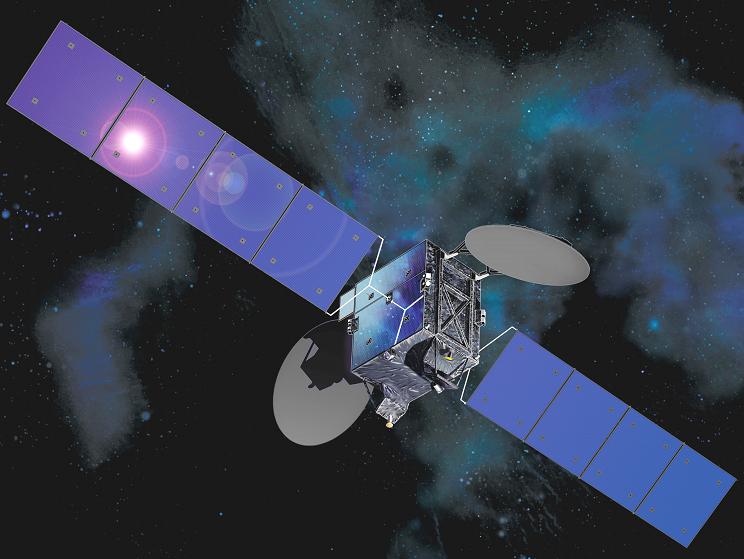

 NanoPPT |
Satellite uses propulsion system for attitude control and orbit control
but there is not much selection of propulsion system (mainly cold gas propulsion
system) for nano and small satellite application. Most of the propellants used for satellite propulsion system are hazardous and toxic so they are not suitable for small satellite developed in Universities, Research Centers or Commercial Satellite Operators due to safety issues. ATI's electric propulsion including microwave engine, one type of electric propulsion system, uses Xenon gas or other inert gas as propellant. These propellants have no problem on the safety and are environmentally friendly. ATI develops other propulsion system such as Pulsed Plasma Thruster (PPT), Hall Effect (SPT) Thruster (5mN, 10mN, 15mN, 30mN, 80mN), and others. Also, ATI provides Standard Heater type Hollow Cathode (operates with Xenon purity of 99.999%) and Xenon gas for electric thrusters. ATI also provides propulsion system for CubeSat applications. Applicable propulsion such as nanoFEEP and nanoPPT are some of the candidates and these can be accommodated in approx. 0.5U volume. Size and mass of the propulsion system depends on the total impulse requirements so please contact us with your requirements. Major Parameters of nanoPPT are as follows: Input energy: 2J Average Impulse Bit: 20µNs Specific Impulse: ≧1,000s Firing cycle: 2Hz (Max for single PPT), 4Hz (Max for 2 PPTs) Size: 0.5U to 1U TRL: 6 First flight schedule: 2025 Cubesat version of nanoPPT is also available. Please contact us for details. |
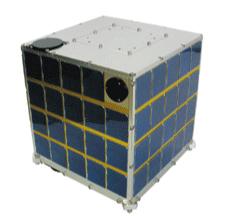 |
In the early stages of space development, there were a simple mission
for on-orbit testing of new satellite bus components such as the ones which
ATI has developed or student experiment but as present, there are no such
opportunities. In order to advance the new technology, development, designing, and ground testing of space products is important but actual space flight is most important to confirm the new technology so there are lot of needs for the small space laboratory. There will be a lot of needs for simple, low-cost, small satellites which can meet the needs of this kind of on-orbit testing of newly developed space equipments. ATI is developing small satellites (1 kg to 100 kg) to realize the above experimental needs and to advance the nano technology for future small, nano-satellites. From this development, ATI has developed microwave engine system, nanoPPT, and reaction wheel to meet this goal. Also, ATI provide a standard 1U, 3U, and 6U CubeSat Bus System. ATI also provides total CubeSat development support including payload/bus assembly, integration, and testing. For details, please contact us. |
 |
In cooperation with foreign satellite manufacturer and R&D center,
ATI provides various type of flight proven satellite systems to meet each
customers needs from small to medium LEO satellites to medium to large
commercial GEO satellites. With the use of flight proven standard satellite
bus, ATI can provide fast delivery with low cost. ATI can also propose a complete system with our launch service. Please contact us for details. |
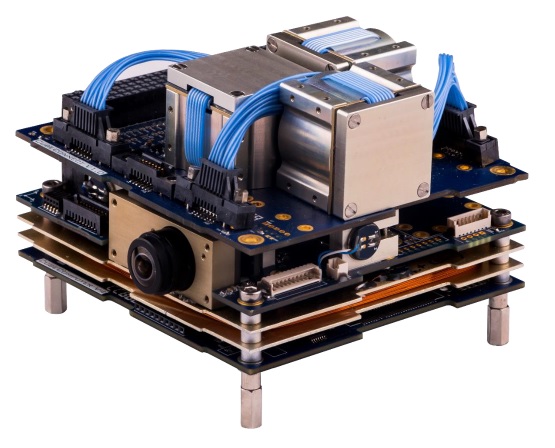 CubeSat ADCS  Single Axis Momentum/Reaction Wheel  CMG |
For attitude control of satellite, delicate spinning top (wheel) is used. This is usually called "Momentum and/or Reaction Wheel" and it is very expensive and has been only developed for medium to large satellite. Present advanced small satellite will require reaction wheels for its attitude control so ATI is developing this reaction wheel for small satellite application. We also distribute 3 axis reaction wheel in one package and single axis momentum / reaction wheels for small to medium satellite. Control electronics is built into this wheel so interface is very simple. These momentum and reaction wheels had been used in many satellite engineering, ground test, and flight models. 3 Axis Reaction Wheel For Nano and Micro Satellite CubeSat ADCS Complete 3 Axis Control System. It consists of 3 RW, 3 magnetic torquers, 3 axis magnetometer, sun sensor, earth sensor, 3 MEMS Gyro as well as fully programmed ADCS computer. Momentum Storage 1.77 to 30.6 mNms (depending on the size of RW) Max Torque 0.23 to 2.3 mNm (each axis and depending on the size of RW) Power 2.3W (Peak without RW) Voltage 3.3 and 5 Vdc Pointing Accuracy 0.2deg Size 90x96x75mm Operating temperature: -10 to +60 deg C TID: 20 kRad Option Star Tracker CubeStar (Use with CubeSat ADCS) Power 0.264W (Peak) Voltage 3.3 Vdc Accuracy: 0.02 deg (axisboresight) Max Slew Rate: 0.3 deg/sec Update rate: 1 Hz (max) Size 50x35x55mm Mass: 55g TID: 24 kRad Please inquire for details. We also have single axis momentum/reaction wheels ranging from 12 to 100 Nms (Momentum Storage) and 75 to 130 mNm (Torque). Please contact us for the details. Following are few specifications of our wheels:
We also have Control Momentum Gyro (CMG) with following specifications:
|
|||||||||||||||||||||||||||||||||||||||||||||||||||||||||||||||||||||||||||||||||||||||||||||||||||||||||||||||||||||||||||||
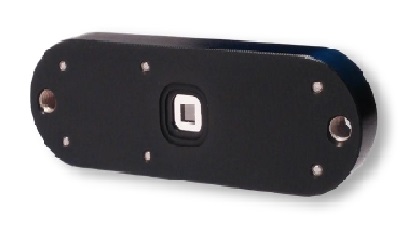 NanoSSOC-D60 Sun Sensor NanoSSOC-D60 Sun Sensor NanoSSOC-A60 Sun Sensor NanoSSOC-A60 Sun Sensor |
ATI provides flight proven, two axes, high performance, and low cost MEMS
based sun sensors for small satellite application from Solar MEMS Technologies. Major Parameters of Digital Interface Sun Sensor, nanoSSOC-D60 Type: 2 orthogonal axes Field of View (FOV): ±60 deg Accuracy: < 0.5 deg Precision: < 0.1 deg Power Supply: 3.3 V / 5 V Power Consumption: < 23 mA Size: 43 x 14 x 5.9 mm Mass: 6.5 gr Communication: UART, I2C or SPI Connector: 10 pin micro-connector Temperature range: -30 to +85 deg C Major Parameters of Analog Interface Sun Sensor, nanoSSOC-A60 Type: 2 orthogonal axes Field of View (FOV): ±60 deg Accuracy: < 0.5 deg Precision: < 0.1 deg Power Supply: 3.3 V / 5 V Power Consumption: < 2 mA Size: 27.4 x 14 x 5.9 mm Mass: 4 gr Interface: 4 V outputs Connector: 10 pin micro-connector Temperature range: -30 to +85 deg C Please contact us for details. |
 μSTAR-250TM  Micro Star Tracker |
ATI provides low cost, flight proven high performance Star Tracker for
LEO and GEO satellites. Major Parameters of Star Tracker, μSTAR-250TM
Total Ionizing Dose (TID) > 100 and 300 krad (Si) (option) Single Event Latchup (SEL) > 80 MeV/mg/cm2 Single Event Upset (SEU) < 10-3 errors/system-day Single Event Functional Interrupt (SEFI): 100% recoverable, H-Core TM Technology Neutrons > 2x10^12 n/cm2 Major Parameters of Star Tracker, ST-APS-1 Instrument Mass (including 30 deg baffle): 4.2 kg Power consumption: 10.6 W (Cooler ON)) Input Voltage: 28 to 48 Vdc FOV: 20 deg x 20 deg Accuracy: 3.0 arcsec (Pitch/Roll, 3 sigma) 36 arcsec (Yaw, 3 sigma) Update Rate: 2/4/5/8 Hz On-orbit Lifetime: 8 years (LEO)/15 years (GEO) Interface: RS-422 Acquisition Time: 2.4 seconds (typical) Slew Rate: <0.3 deg/sec (full performance) 0.3 to 3.0 deg/sec (reduced performance) Operating temperature: -40 to +50 deg. C Major Parameters of Micro Star Tracker, ST-HA-APS4-1 Instrument Mass (including baffle): 900 g Power consumption: 5 W Input Voltage: 5 to 50 Vdc FOV: 17 deg X 17 deg Accuracy: 3 arcsec (3 sigma) Update Rate: 10 Hz On-orbit Lifetime: 5 years Interface: RS-422 Acquisition Time: ≦2 sec Slew Rate: 3 deg/sec Dimension: 86x85x208 mm (including baffle) ATI also have other Star Tracker to fit your needs so please contact us for details. ATI can jointly develop a new Star Tracker which fit your needs with the use of our Rad Hard commercial electronic board technology. Please contact us for your interest. |
||||||||||||||||||||||||||||||||||||||||||
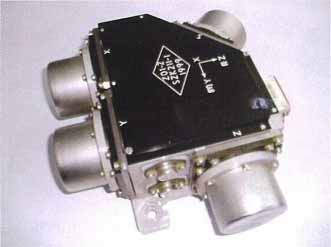 |
ATI provides flight proven high performance Inertial Gyros for LEO and GEO satellites. Major Parameters of Inertial Gyro, IAS-1-4-C Configuration: 4 gyroscopes (3 orthogonal and 1 skewed gyros) Measurement Range: -2≦ω≦2 deg/s Pulse Factor: 1x10-4 deg/pulse Bandwidth: ≧5 Hz Constant drift: ≦5 deg/hr Random drift: ≦0.3 deg/hr Supply Voltage: ±12, +28 V Power Consumption: ≦8.7W (+12V), ≦8.0W (-12V), ≦22W (+28V) Mass: 3.5 kg (Gyro), 4.2 kg (Electronics) Major Parameters of Inertial Gyro, IAS-1-4-A Configuration: 4 gyroscopes (3 orthogonal and 1 skewed gyros) Measurement Range: -2.5≦ω≦2.5 deg/s Pulse Factor: 1x10-4 deg/pulse, 1x10-2 deg/pulse Bandwidth: ≧10 Hz Constant drift: ≦5 deg/hr Random drift: ≦0.3 deg/hr Supply Voltage: 30 to 42V Power Consumption: 35 W Mass: 3.1 kg (Gyro), 7.1 kg (Electronics) Please contact us for details. |
30.6x40.3mm Solar Cell Assembly 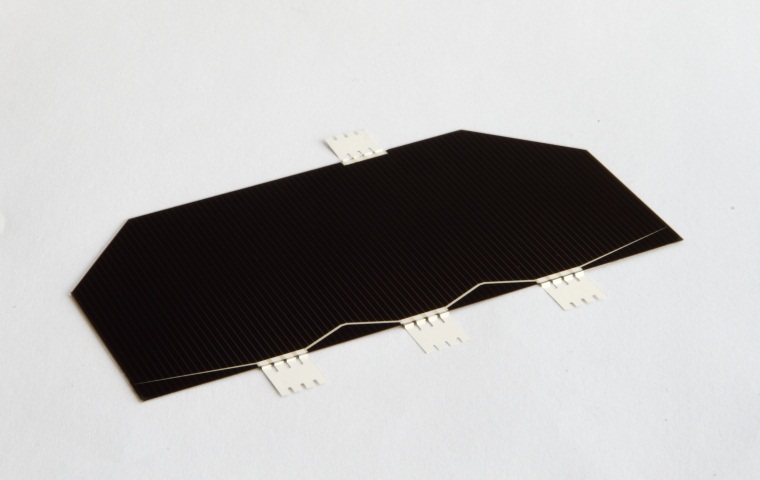 40x80mm Solar Cell Assembly Type 1 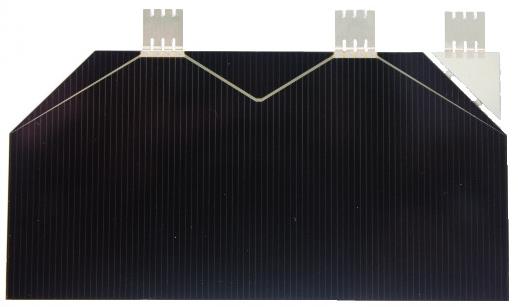 40x80mm Solar Cell Assembly Type 2  |
ATI provides low cost, flight proven Crystalline Silicon solar cell (average efficiency
of 15%), low cost, flight proven high efficiency Triple Junction GaAs solar
cell, Solar Panel, and Solar Array Systems for LEO and GEO satellite. Major Parameters of Triple Junction GaAs Solar Cell Average Efficiency (BOL): 28 to 31% Mass: 84mg/cm2 Available Size: 40mmX60.5mm (Standard), 30.6mmX40.3mm (Standard), 20mmX40mm, 20mmX20mm, 39.5mmX68.9mm (Standard), 40mmX80mm (Standard), 80mmX80mm (No Coverglass), 60mmX120mm (No Coverglass) Can provide both bare cell and CICs. Annual production capacity: >30KW Major Parameters of Silicon Solar Cell Average Efficiency (BOL): approx. 15% Available Size: 20mmX40mm Can provide both bare cell and CICs. ATI can also provide Al honeycomb and CFRP/Al honeycomb Solar Array Substrate panel, cell integration (pasting, wiring, etc.) to substrate panel, and performing various testing for space application. Also, ATI can provide PCB solar panel with solar cells which can be used for CubeSat. Please contact us with your requirements including cell size. ATI can also provide a complete Solar Array System including cell, panel, hinge, york, solar array drive mechanism (SADM), deployment mechanism for Silicon based cell and GaAs based cell. ATI also supplies Crystalline Silicon solar cell (average efficiency of approx. 18%), Triple Junction GaAs solar cell (average efficiency of approx. 32 to 35%) for flat panel use, and Triple Junction CPV GaAs solar cell (average efficiency of approx. 42%@ 500 sun concentration ratio) and receiver for ground solar power system. Please contact us for details. |
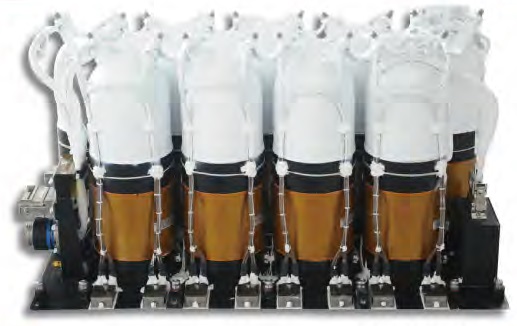 Nickel Hydrogen Battery  Nickel Cadmium Battery  Lithium Ion Battery 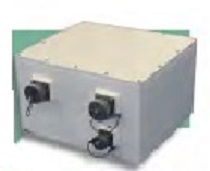 Zn-Ag Battery 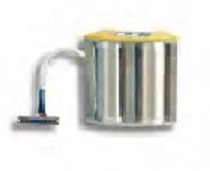 Thermal Battery |
ATI provides primary and secondary batteries for satellite and launch vehicle. Secondary Batteries for On-Board Satellite
Primary Batteries for Launch Vehicle
Please contact us for details with your requirements. |
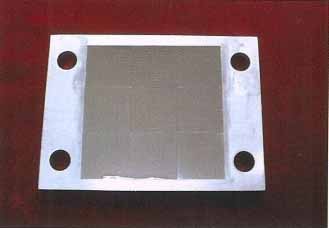 OSR OSRHeat Pipe |
ATI provides low cost, flight proven satellite thermal control components
(Optical Solar Reflector (OSR), Multi-Layer Insulation (MLI), Heat Pipe
and Heat Pipe Embedded Honeycomb Panel). Major Parameters of OSR Absorptivity (αs): ≦0.08~0.1 Emissivity (εh): ≧0.76~0.8 Thickness: 0.1mm Available size: 40mmX20mm, 40mmX40mm Annual production capacity: 100,000 pieces Multi-Layer Insulation (MLI) Provide various types of MLI ranging from low to high temperatures. Manufacturing can be provided by either providing your requirements or providing a CAD drawings. Also, provides kapton tape and aluminized kapton tape. Heat Pipe Provide various type (single, dual, flexible, cryogenic, high temperature, variable conductance) heat pipes and deployable radiator for your specific requirements. Also, provide heat pipe embedded honeycomb panel. Please contact us with your requirements. Thermal Coatings (Organic and Inorganic) Provide various types of space use thermal coatings (white, black optical, transparent, electrically conductive, etc.) for your specific requirements. Please contact us with your requirements. Please contact us for details. |
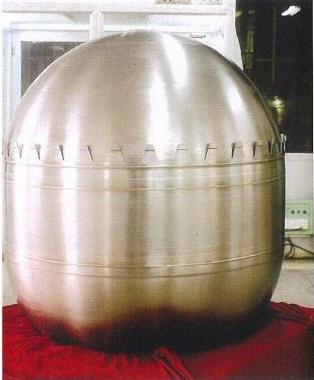  Propellant Tank Thruster Propellant Tank Thruster Composite/Metallic Propellant Tank Valve Driver  Nozzle Extension |
ATI provides design and development of satellite propulsion systems and
components such as thruster, propellant tank, pressurant tank, filters,
etc. 1. Major Propulsion Systems
ATI also develops space qualified valve drivers (including miniature size valve drivers) so please contact us for details. |
 PROTON-200k  PROTON-400k 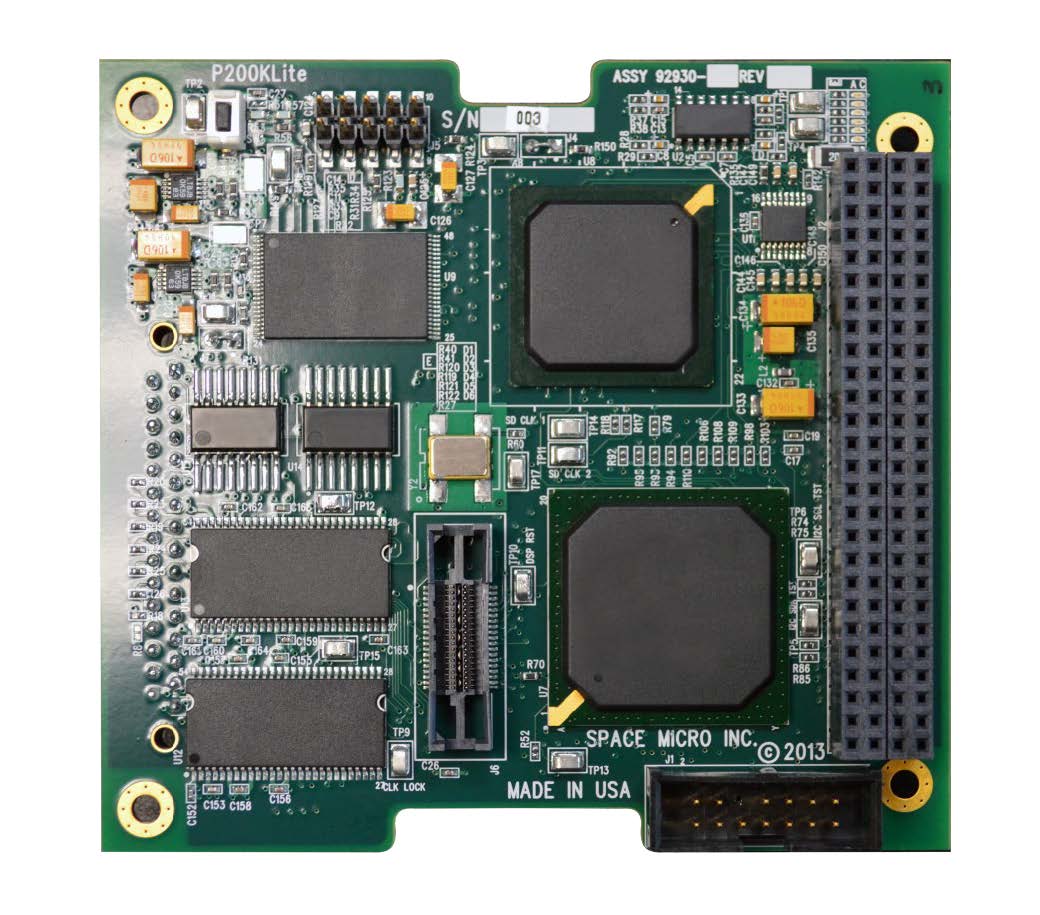 Proton200k-L Proton200k-L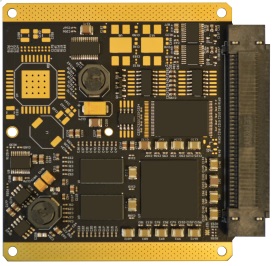 CSP 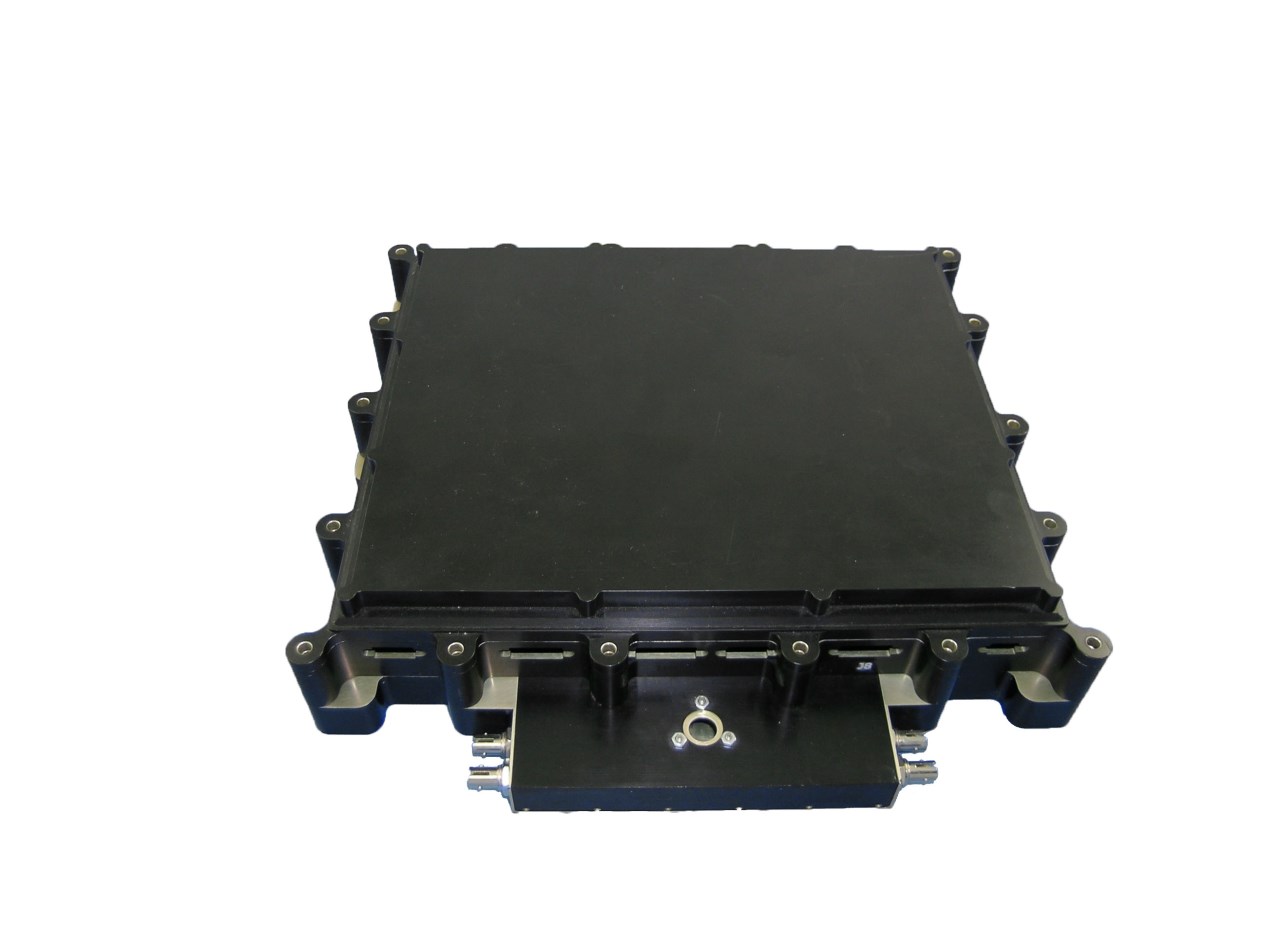 IPC7000 IPC7000 |
ATI provides flight proven, low cost, rad hard, high performance electronics
(including computer boards, etc.) for LEO and GEO satellites. Uses Space
Micro's patented Time Triple Modular Redundancy (TTMRTM) and Hardened Core (H-CoreTM) technology to migitage, detect, and correct radiation effects in space
environments. Major parameters of PROTON-200kTM DSP Processor Boards Processor: Fixed Point Version: TI 320C6XXX, 1GHz, 8,000 MIPS native
Memory: 128 MB to 32 MB SDRAM w/EDAC & 256 or 64 MB without EDAC 1 MB EEPROM to 8 Mbyte (option), 512 MB RH Flash (option) Radiation Tolerance: SEL > 63 LET (MeV-cm2/mg) SEU < 1 per 1,000 days (1.0 E-4, 90% W.C. GEO, Orbit dependent) TID > 100krad (Si), Orbit dependent SEFI 100% recoverable Operating Temperature: -24˚C to +61˚C Interface: 32bit, 33MHz I/O bus OS: TI Code Composer Studio Major Parameters of PROTON-400kTM Single Board Computer
Major Parameters of PROTON-600kTM Multi-Core Computer
Major parameters of PROTON-200k-LTM Lite DSP Processor Boards for CubeSat Processor: Fixed Point Version: TI 320C6XXX, 1GHz, 8,000 MIPS native
Memory: 128 MB to 32 MB SDRAM w/EDAC (256 or 64 MB without EDAC) 1 MB EEPROM to 8 Mbyte (option), 32 Gb RH Flash (option) Radiation Tolerance: SEL > 63 LET (MeV-cm2/mg) SEU < 1 per 1,000 days (1.0 E-4, 90% W.C. GEO, Orbit dependent) TID > 100krad (Si), Orbit dependent SEFI 100% recoverable Interface: 32bit, 33MHz I/O bus OS: TI Code Composer Studio (option) TI DSP/BIOS RTOS (option) JTAG debugging support Power: 2.3 to 5 W OS: TI Code Composer Studio Operating Temperature: -24 to +61 deg C Software Development Unit (SDU) and EM are also available Major parameters of CubeSat Processor (CSP) Board Processor: Xilinx Zynq-7020
** Not all interfaces can be used simultaneously Power: 1.6 to 2.85 Watts Memory: 32 GB NAND Flash 8 GB DDR3 SDRAM (4 GB when EDAC is active) FPGA Programmable Logic: 10 MHz to 250 MHz Clock 24 differential pairs, 12 single ended 140 - 36 kb Block RAM (4.9 Mbit) Programmable I/O Blocks Support LVCMOS, LVDS, and SSTL, with 1.8V, 2.5V, 3.3V I/O Size: 1U (88.1x89.5x17.3mm) Radiation Tolerance: SEL: No Destructive Events SEU: Unmitigated - Same SEU rates as a commercial Xilinx 7 family Zynq part TID: 30krad (Si) SEFI: Mitigated with watchdog for ARM Cores OS: Wumbo GNU/Linux, Bare Metal, ThreadX Operating temperature: 0 deg C to +70 deg C Mass: 74g EM and Evaluation board are available. Major Parameters of IPC7000TM Image Processing Computer The IPC5000/7000TM image processing platform is a three board set (Single Board Computer (SBC), Solid State Buffer, Image Processing Computer(IPC)) that combines high performance, low power radiation hardened computing and high-speed mass memory to meet the challenges of the space imaging environments. SBC:
Other boards are also available such as Standard SpaceWire boards, micro-GPS Receiver, ProtonX-BoxTM Avionics Suite, Proton2X-BoxTM Avionics Suite, Rad Hard Internet Protocol Encryptor, etc. Please contact us for details of the above boards. |
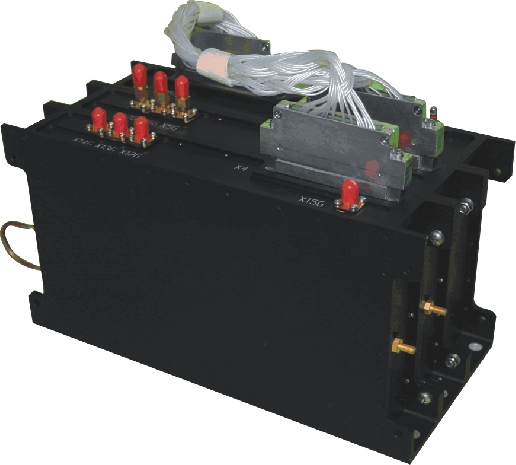 X-Band QPSK Modulator 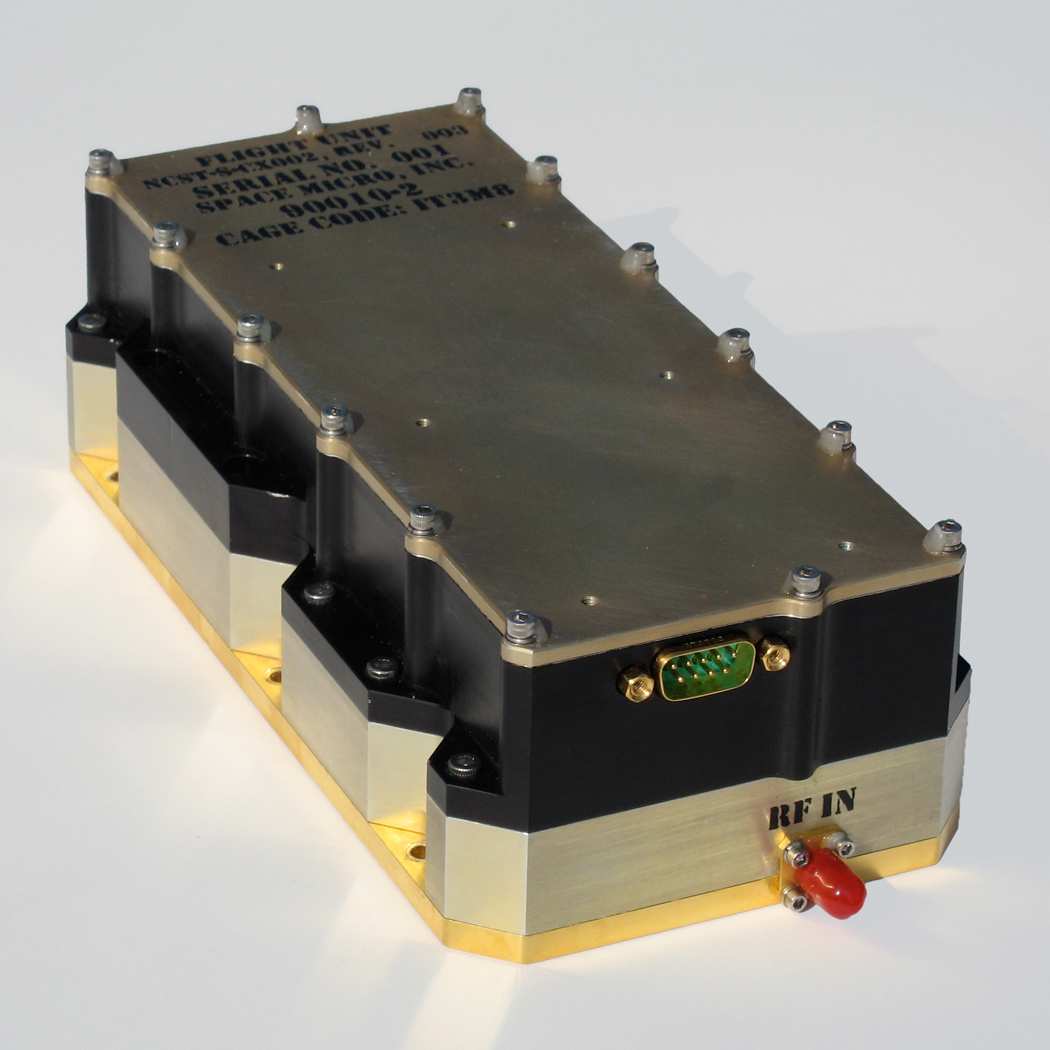 X-Band Linearized Power Amplifier X-Band Linearized Power Amplifier μSTDN S-Band Transponder μSTDN S-Band Transponder μXTx-200 X-Band Transmitter μXTx-200 X-Band Transmitter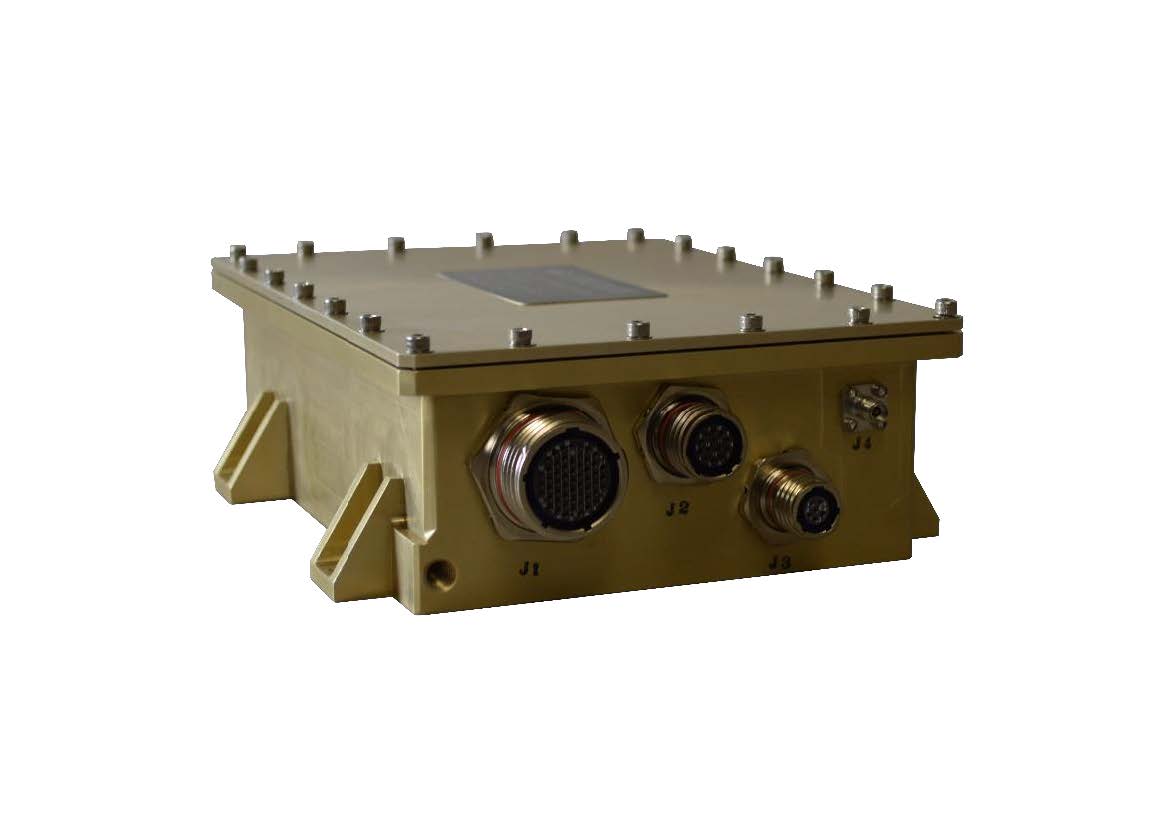 μKaTx-300 Ka-Band Transmitter |
X-Band QPSK Modulator is used in data transmission system on-board earth
observation and scientific satellites. This modulator consists of local
oscillator, QPSK modulator, microwave filter, microwave amplifier, and
data encorder by using integrated design technique to reduce mass and size. Major Parameters of X-Band QPSK Modulator:
Other Communication Equipments: Major Parameters of X-Band Linearized Power Amplifier:
Major Parameters of μSTDNTM S-Band Transponder:
Major Parameters of μXTx-200TM X-Band Wideband Transmitter:
Major Parameters of μKaTX-300TM Ka Band Wideband Transmitter:
ATI also provides other space communication equipments such as Microwave Amplifiers (LNA, SSPA, TWTA), VHF to Ka Band Solid State Power Amplifier (SSPA), RF Amplifiers (LNA, SSPA) for SAR and Radiometers, Microwave Converter, Microwave Receiver, I/OMUX, DC/DC Converter, RF Power Amplifier for Acousto-Optic, etc. For details including above products, please contact us. |
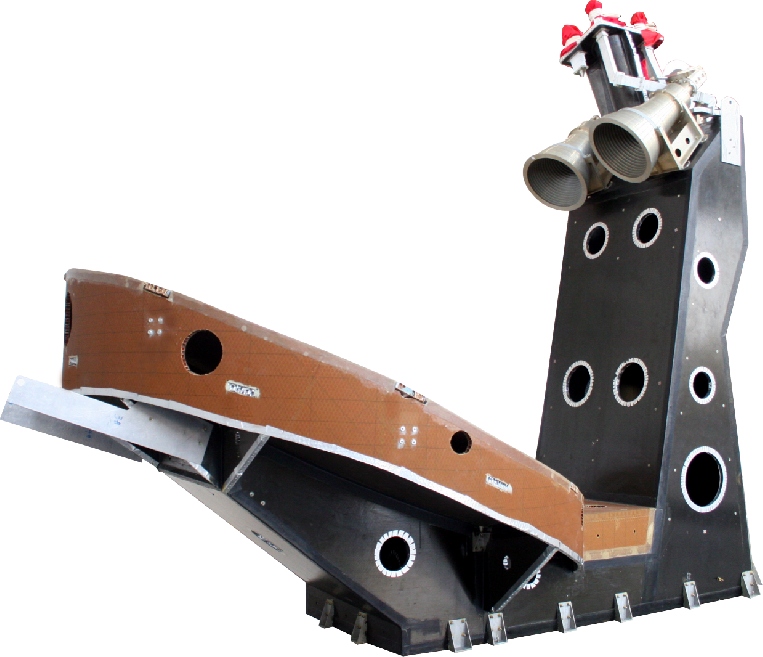 |
ATI provides various satellite communication antenna. Following are major
antenna:
|
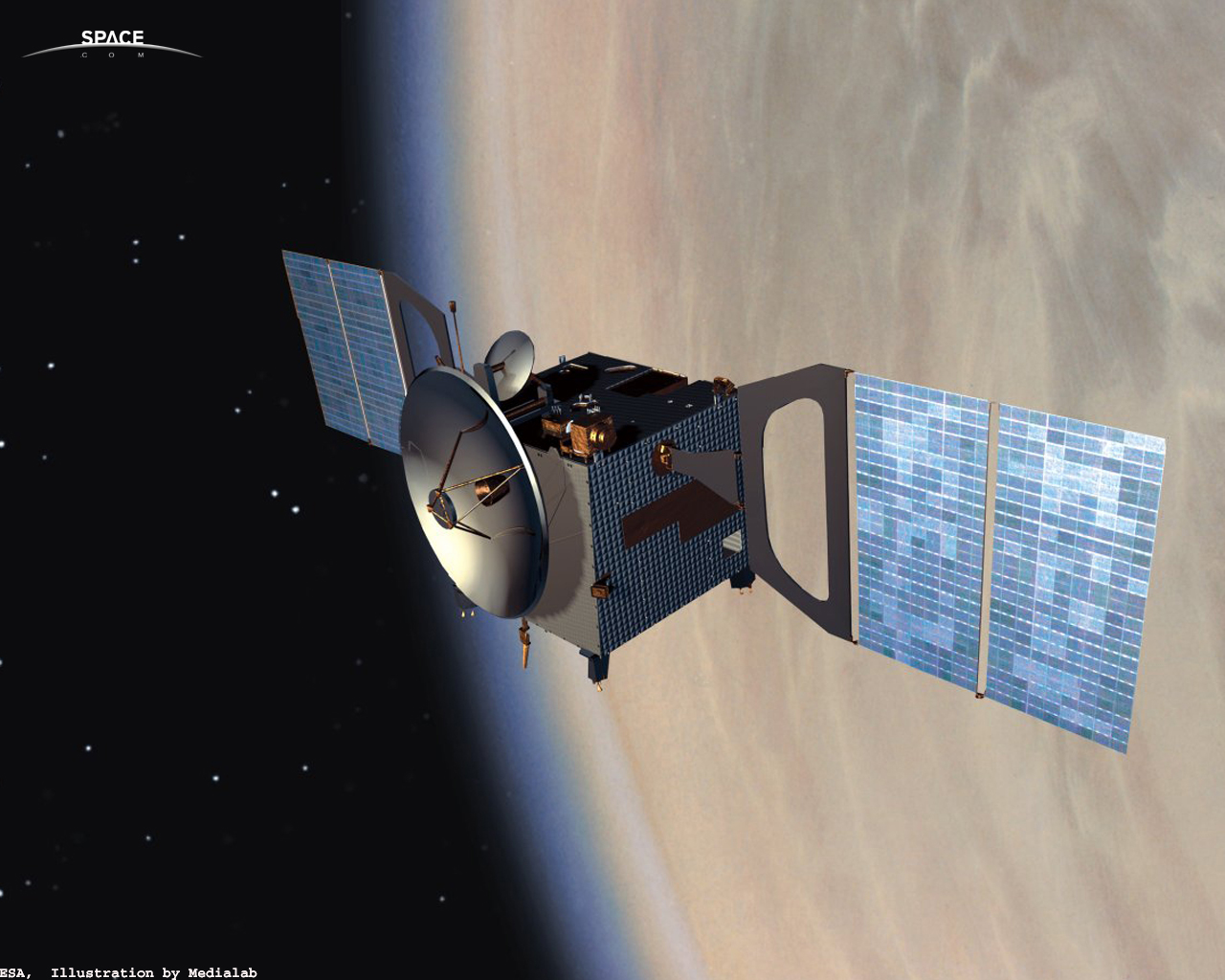 |
ATI provides design, development, and engineering support for launch vehicle
and satellite (ranging from nano to large satellites and from scientific
to commercial LEO, MEO, and GEO satellites) system, subsystems including
structures, thermal control, propulsion systems (chemical (including green
propellant) and electrical), electrical and power, attitude control, solar
array, communication, antenna, etc., and related components. ATI's engineers
have more than 30 plus years of experiences in designing and in research
and development of various space programs in Japan and in international
space communities. ATI also provides various support (including proposal writing and implementation) in realizing space application and space business. ATI feels that without space commercialization, there will be no future for space development so we put a lot of effort in this area. |
ATI has other products Rad Hard CubeSat Boards, Deployment Mechanisms, Separation Bolt, Deployment
Boom, Pointing Mechanism, Hinges, Actuator Motor, etc.) for satellite application so please contact us for these products.
